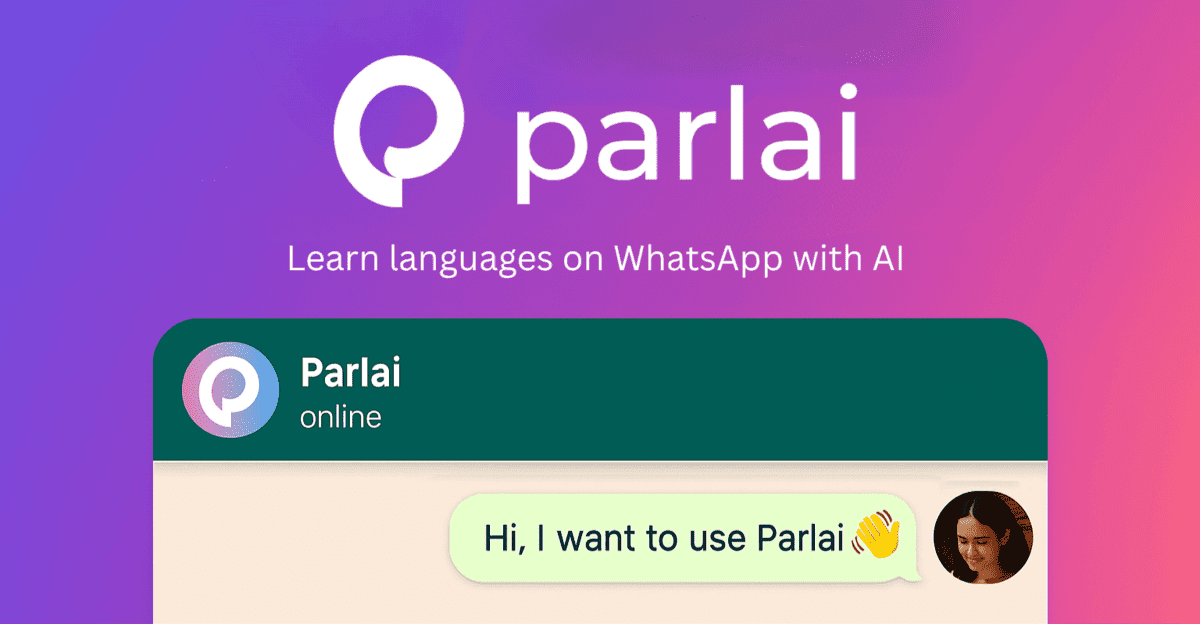The Best Way to Learn Spanish: Science-Backed Methods
Nina Authried
3 min read

Practice with Parlai on WhatsApp
Get instant speaking and listening drills, anytime.
Table of Contents
Everyone wants to know the "best way to learn Spanish." You’ve probably tried apps, classes, or immersion. Some help, some don’t. Here’s the short, research-backed playbook that actually works—and fits real life.
What Works (Backed by Research)
- Speak early and often: Real conversations create strong memory pathways and 3–5x faster progress.
- Comprehensible input: Consume content just above your level so you understand most of it while stretching a bit.
- Spaced repetition: Review at increasing intervals so what you learn actually sticks.
- Context over rules: Learn phrases and patterns in use; grammar makes sense when you see it in action.
- Active recall: Test yourself instead of re-reading. Retrieval builds durable memory.
A Simple Daily Routine (45–60 min total)
- 10 min — Review: Flashcards or a spaced repetition app. Add 5–10 useful phrases.
- 15–20 min — Input: Read or watch content you mostly understand. Note 3–5 new items in context.
- 15–20 min — Speaking: Have a conversation (AI or human). Use today’s words.
- Ambient — Passive input: Music, podcasts, social feeds in Spanish.
Consistency > intensity. Short daily sessions beat long weekly cramming.
Fastest Wins (Do These First)
- Immersive conversation practice
- Immediate feedback, confidence, and fluency gains.
- No partner? Use an AI tutor for on-demand chats.
- Comprehensible input
- Switch subtitles from English → Spanish → none over time.
- Use learner podcasts or graded readers at your level.
- Spaced repetition for phrases
- Save high‑frequency phrases you actually say.
- Review them briefly every day.
Avoid These Traps
- Grammar-only study without usage
- Constant translation (prevents thinking in Spanish)
- Perfectionism (mistakes are required reps)
- Cramming before “getting serious”
Why WhatsApp + AI Works So Well
- Always available: Practice whenever you have 5–10 minutes.
- Personalized: Adapts to your level and interests.
- Contextual: Learn grammar and vocab inside real exchanges.
- Built‑in review: Recycles what you’ve learned at the right time.
Quick Starter Plan (This Week)
- Day 1–2: Set up spaced repetition; add 20 phrases you’ll use.
- Day 3–4: 15 minutes/day of Spanish YouTube or podcasts for learners.
- Day 5–7: 20 minutes/day of conversation (AI or partner). Use your saved phrases.
Bottom Line
The best way to learn Spanish is simple:
- Speak daily
- Consume comprehensible input
- Review with spaced repetition
- Keep sessions short and consistent
Want the easiest way to stick to it? Practice in WhatsApp with an AI tutor that’s ready 24/7. Try Parlai and turn today into Day 1.
Related Articles
Join 10,000+ learners
Ready to Start Your Language Learning Journey?
Join thousands of learners who are already improving their language skills with Parlai.
Start Learning Now
Available 24/7 on WhatsApp
